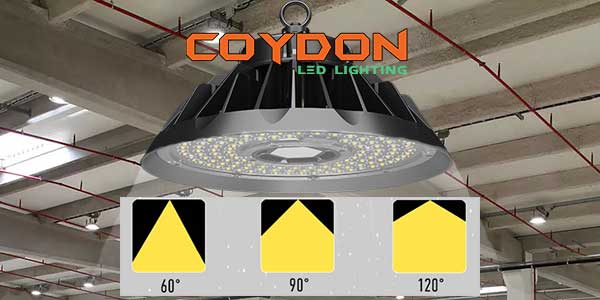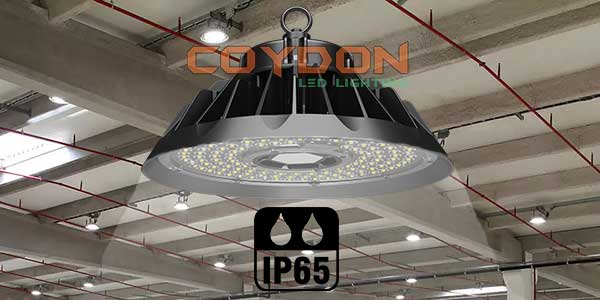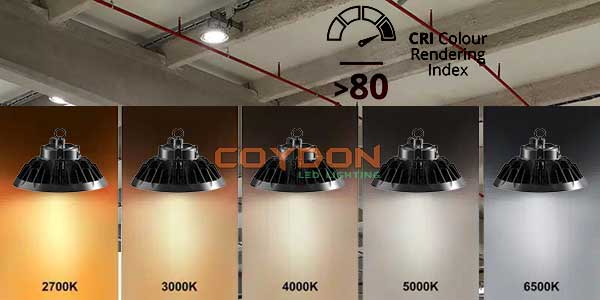1. The Hidden Drain on Your Warehouse Profits Isn't What You Think

As you finalize your daily operations and secure the warehouse, a relentless profit killer remains active. It operates silently overhead. This is not your staffing cost or your climate control system. The culprit is most likely your antiquated lighting infrastructure. Those energy-draining metal halide fixtures or flickering fluorescent tubes are secretly undermining your financial performance. They consume a disproportionate amount of electricity. They demand constant and expensive maintenance cycles. They create dangerous shadows and inconsistent light levels that compromise safety and decelerate workflow. This transcends a simple utility expense. It represents a substantial, and often ignored, operational drain on your profitability.
1.1. Beyond Illumination: A Strategic Business Decision
Choosing your warehouse lighting is a critical strategic business decision. It impacts your bottom line, operational safety, and workforce productivity. Inefficient lighting initiates a cascade of negative effects and hidden expenses. Primarily, you encounter exorbitant and unnecessary electricity costs. Outdated lighting systems can account for up to 60% of a warehouse’s total energy consumption. This is a direct financial leakage that can be drastically reduced.
Secondly, the cycle of frequent lamp replacements and ballast repairs leads to significant operational downtime. These maintenance activities halt productivity. They delay order fulfillment and increase labor costs. The most severe consequences, however, relate to safety and accuracy. Poor illumination elevates the risk of workplace accidents. This includes trips, falls, and collisions involving forklifts. It also causes mislabeled items and incorrect order picking. Such errors result in financial losses from inventory shrinkage and diminished customer trust. Therefore, view a lighting upgrade not as a capital expense. It is a high-return investment into your facility’s efficiency, safety, and long-term profitability. The returns are measurable and substantial.
2. The 3-Pillar Framework for a Modern Warehouse Lighting Upgrade
Upgrading your warehouse lighting requires a strategic approach. It is not just about swapping old fixtures for new ones. You need a comprehensive framework. This ensures optimal results for safety, efficiency, and cost savings. We have developed a simple yet powerful 3-pillar framework. It will guide you in making the best lighting decisions for your facility.
2.1. Light Levels And Layout: The Science of Seeing Clearly
Understanding light levels is the first critical step. Lighting intensity is measured in Lux or Foot-candles (fc). One foot-candle equals one lumen per square foot. Different warehouse areas require different light levels based on their tasks. Here is a brief guide:
- Loading Bays And Detailed Assembly: 300-500 lux (30-50 fc)
- Picking And Packing Areas: 200-300 lux (20-30 fc)
- General Storage And Aisles: 100-200 lux (10-20 fc)
- Walkways And Rest Areas: 50-100 lux (5-10 fc)
However, total brightness is not enough. You must also consider uniformity. The Uniformity Ratio is the difference between the brightest and darkest spots. A poor ratio creates dangerous shadows and eye strain. Workers struggle to adapt to changing light levels. This leads to fatigue and increases accident risks. Consistent, even illumination is non-negotiable for a safe, productive warehouse.
Achieving this balance is complex. It requires professional planning. At Coydon Lighting, we eliminate the guesswork. We provide a professional Dialux photometric simulation report. This report generates a precise lighting layout and a lux-level heatmap. It ensures your facility meets the optimal standard before installation. You see the results visually and make decisions with confidence.
2.2. Fixture Types And Beam Angles: Why UFO LED High Bay Lights Dominate Modern Warehouses
For the vast majority of warehouses, UFO LED High Bay lights are the new industry standard. They outperform older technologies and other LED forms. Their design is perfectly suited for the demands of modern industrial spaces.
Superior Optical Control And Versatility

UFO LED High Bay Lights use advanced polycarbonate lenses. These lenses provide precise beam angle control (60°/90°/120°). This is more efficient than old reflector-based designs. Lenses direct light exactly where it is needed. This minimizes wasted spill light on ceilings and walls. The symmetrical light distribution is exceptionally versatile. It performs brilliantly in open areas, between storage racks, and in mixed layouts. You can standardize on a single, highly effective fixture type for your entire facility.
Rugged Design and Efficient Thermal Management

The compact, integrated design is built for toughness. The aluminum housing and PC lens are highly impact-resistant. They also resist dust accumulation. The IP65 rating guarantees protection against dust and moisture. This makes them ideal for harsh industrial environments. The circular shape and aluminum body provide a large surface area. This allows for exceptional heat dissipation. Efficient thermal management is the key to achieving a high 150 lm/W efficacy. It also ensures a long operational lifespan for the LEDs.
2.3. Color Temperature And CRI: Setting the Right Mood for Work

The color of light significantly impacts the work environment. Color Temperature, measured in Kelvin (K), defines whether light appears warm or cool. For warehouse tasks, the 4000K-5000K range is the gold standard. This cool white light promotes alertness and reduces eye strain. It creates a bright, daylight-like atmosphere. This enhances focus and productivity. Warmer light (3000K) is too relaxing for detailed work. Cooler light (6000K+) can feel harsh and clinical.
Alongside color temperature, Color Rendering Index (CRI) is vital. CRI measures a light’s ability to reveal the true colors of objects. A high CRI (80+) is crucial for accuracy. It ensures workers can easily read labels and distinguish wire colors. It helps identify product details without mistakes. Our KD-HBD series offers optimal color temperature choices, including 4500K. This ensures your workspace is both brilliantly illuminated and visually comfortable for all tasks.
3. Beyond the Bulb: How Coydon Lighting's Engineering Delivers Unbeatable ROI
Selecting the right lighting partner requires careful consideration. It involves evaluating both product quality and supplier reliability. At Coydon Lighting, we approach every project with a comprehensive perspective. Our engineering philosophy focuses on delivering maximum value through intelligent design. We integrate high-efficiency components with robust construction methods. This ensures long-term performance in demanding industrial environments. Our solutions are specifically tailored to reduce operational costs. They also enhance workplace safety and employee productivity. The following sections detail how our product features translate into measurable business benefits. We believe in creating partnerships through transparent communication and proven results.
3.1. The Efficiency Edge: Why 150 Lumens Per Watt is a Game-Changer
Understanding lighting efficiency is crucial for cost management. The lumens-per-watt metric serves as our primary efficiency indicator. It directly correlates to your electricity consumption and operating expenses. Modern warehouses require high-efficiency lighting solutions. Our KD-HBD series establishes new performance benchmarks in this category. The standard 150 lm/W rating represents significant technological advancement. This achievement results from careful component selection and thermal management design. We utilize premium LED chips from industry-leading manufacturers. Our drivers operate with exceptional electrical conversion efficiency. These elements combine to deliver outstanding performance characteristics.
Comprehensive Energy Analysis
Consider a typical warehouse operating scenario for illustration. Assume a facility utilizes one hundred twenty lighting fixtures. These operate continuously throughout extended work shifts. The comparison between different efficiency levels becomes quite revealing. Lower efficiency fixtures require substantially more power input. This directly translates to higher electricity costs over time.
- Standard Efficiency Fixtures (120 lm/W): Typically require 175W per unit
- Coydon Lighting Solution (150 lm/W): Requires only 140W per unit
Detailed Annual Savings Calculation:
- Power Difference: 175W – 140W = 35W savings per fixture
- Total Annual Savings: 35W × 100 fixtures × 12 hours/day × 365 days = 1,533,000 watt-hours
- This converts to 1,533 kilowatt-hours of conserved electricity
- At standard commercial rates of $0.12 per kWh, this represents $184 in direct savings
- These demonstrated savings accumulate consistently year after year
- The return on investment becomes increasingly substantial over time
3.2. The Power of Direct Replacement: Simplifying Your Upgrade
Transitioning to advanced lighting should be straightforward. We specialize in creating seamless upgrade experiences. Our replacement methodology emphasizes simplicity and predictability. The physical dimensions of our fixtures facilitate easy installation. The electrical compatibility ensures minimal modification requirements. This comprehensive approach reduces implementation complexity significantly. Your operations continue uninterrupted throughout the process. The benefits become immediately apparent following installation completion.
Practical Replacement Scenarios
Various replacement situations demonstrate this simplicity. Consider replacing older 400W metal halide fixtures. Our 200W solution provides equivalent illumination immediately. The energy reduction exceeds fifty percent per replacement unit. The visual environment shows noticeable improvement in quality. Color rendering and distribution characteristics improve substantially.
Expanded Replacement Guidelines:
- 100W LED Model: Perfect for 150W-250W metal halide applications
- 150W LED Model: Ideal for 250W-400W metal halide replacements
- 200W/240W LED Models: Designed for 400W-600W metal halide fixtures
This systematic approach streamlines decision-making processes. It eliminates uncertainty during planning phases. Project implementation proceeds efficiently and predictably. The result is a successful lighting transformation experience.
3.3. The Smart Warehouse: Integrating Sensors and Controls for Maximum Savings
Intelligent lighting represents the industry’s future direction. Modern facilities require adaptable illumination systems. Our products incorporate advanced control capabilities for this purpose. The optional microwave sensor technology offers significant advantages. These sensors detect movement with exceptional reliability. Their operational principle ensures consistent performance across conditions. The coverage area substantially exceeds conventional alternatives. This technology functions independently of environmental factors. It represents a substantial improvement over traditional methods.
Advanced Control Applications
Strategic implementation maximizes energy conservation. Consider warehouse areas with intermittent occupancy patterns. These spaces present ideal opportunities for automated control. Motion-activated lighting eliminates unnecessary energy consumption. The system responds instantly to occupancy status changes. This automation reduces human intervention requirements. The energy savings in these applications can be dramatic.
Dimming Technology Integration
Our 1-10V dimming capability enables further optimization. This feature interfaces seamlessly with building management systems. It also functions with standalone light-level sensors. The daylight harvesting application demonstrates particular value. Artificial lighting levels adjust based on natural light availability. This maintains consistent illumination quality throughout daylight hours. The energy savings accumulate continuously during operation.
3.4. Durability And Peace of Mind: Built to Last, Backed by a 5-Year Warranty
Industrial environments present unique challenges for equipment. Lighting systems must withstand demanding operating conditions. Our engineering addresses these requirements comprehensively. The IP65 protection rating ensures exceptional environmental resistance. This construction prevents dust infiltration completely. It also protects against water exposure from any direction. These characteristics ensure reliable performance in difficult settings.
Component Quality Assurance
We select every component for maximum durability. The OSRAM LED chips provide industry-leading performance. Their consistent light output and longevity are well documented. The aluminum housing serves multiple critical functions. It provides structural integrity and impact resistance. More importantly, it enables efficient heat dissipation. Proper thermal management is essential for maintaining performance. It directly influences both light output and operational lifespan.
Warranty Protection Details
Our five-year warranty provides comprehensive coverage. This protection demonstrates our confidence in product quality. It represents our commitment to customer satisfaction. The warranty covers manufacturing defects and performance issues. This assurance eliminates future financial uncertainties. It transforms lighting from an expense into a protected investment. The long-term value proposition becomes clearly established. Your operations benefit from reliable illumination continuously.
4. Your Blueprint to a Brighter, Smarter Warehouse Starts Here
You have now explored the critical elements of superior warehouse lighting. Understanding these principles is the first step toward transformation. The next step is taking action to realize these benefits in your facility. This final section provides a clear roadmap for moving forward. We outline the distinct advantages of partnering with Coydon Lighting. We also present straightforward steps to begin your lighting upgrade journey. Let us help you transform your warehouse into a model of efficiency and safety.
4.1. The Coydon Lighting Advantage: Your Partner in Lighting Efficiency
Choosing Coydon Lighting means selecting a comprehensive solution. We integrate industry-leading technology with expert support. Our unique value proposition delivers unmatched performance and reliability. It combines several key advantages for your benefit. You receive fixtures with a top-tier 150 lm/W efficacy rating. This ensures maximum energy savings from day one. You gain access to customizable smart features like sensors and dimming. These options provide automated control and further reduce costs.
We also provide a crucial professional service. Our team creates a customized Dialux photometric design plan for you. This plan visually confirms the lighting performance before installation. It guarantees optimal light levels and uniform distribution. Finally, your investment is protected by a robust 5-year warranty. This demonstrates our long-term commitment to your satisfaction. We do not just sell you lighting products. We deliver a fully calculated and verified lighting solution. Our goal is maximizing the return on every dollar you invest.
4.2. Your Next Steps: A Clear Path Forward
Transforming your warehouse lighting is a significant decision. We make the process simple, transparent, and risk-free. The most effective way to start is with professional data and a concrete plan. Seeing is believing, and we provide that clarity before you commit.

Your First Step: Get Your Free, No-Obligation Dialux Lighting Plan and Proposal
We invite you to click the “Inquiry Now” button today. This action starts a collaborative process with our lighting specialists. You will provide basic information about your warehouse. This includes dimensions, ceiling height, and current layout. Our experts will then use this data to engineer a custom solution. We will generate a detailed Dialux photometric simulation report specifically for your space.
This professional report provides a visual heat map of your future lighting. It shows exactly how light will be distributed across your floor. The report proves that target illumination levels will be met consistently. You will also receive a precise itemized proposal with clear pricing. This comprehensive package eliminates all guesswork and decision-making risk. You can evaluate the projected results and investment with full confidence. Take this first step toward a brighter, smarter, and more profitable warehouse now.
